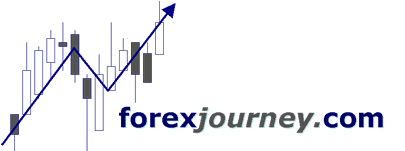A Four-Chart Lesson in Spotting Trade Setups
June 29, 2011
By Elliott Wave International
You can find low-risk, high-probability trading opportunities by trading with the trend. The trick is to find the end of market corrections, so you can position yourself for the next move in the direction of the trend.
This excerpt from Jeffrey Kennedy's free 47-page eBook How to Spot Trading Opportunities explains where to find bullish and bearish trade setups in your charts and how to zero-in on these opportunities. If this lesson interests you, the full 47-page eBook is free through July 6.
On the left-hand side of the illustration below, there are two bullish trade setups. As traders, we want to wait for the wave (2) correction to be complete so we can catch the move up in wave (3) – this is the trade. What we are trying to do in this bullish trade setup is anticipate the potential for profits on the buy-side as prices move up in wave (3). Another bullish trade setup is at the end of wave (4).
As traders, we are looking to buy the pullback and position ourselves within the direction of the larger up-trend. Remember, three-wave moves are corrections, which means that they are countertrend structures. On the other hand, five-wave moves define the larger trend. As traders, we want to determine what the trend is and trade in the direction of the trend. Our buying opportunity to rejoin the trend is whenever the trend pauses and forms a correction.
Now, let’s look at the right-hand side of the illustration where we see two bearish setups. When a five-wave move is complete, it is retraced in three waves as a correction. The end of the five-wave move presents the first trading opportunity that we can take advantage of the short side (or the sell side) as the wave (A) down begins.
Notice the second bearish trade setup gives us another shorting opportunity as wave (B) tops.
So, within the classic wave pattern of five waves up and three waves down, we have four high-probability trading opportunities in which we are either positioning ourselves in the direction of the trend or identifying termination points of a trend. I want to share with you some tricks I have picked up over the years about how to analyze corrective waves and their termination points. The single most important thing I’ve learned from analyzing corrections is that corrective or countertrend price action is usually contained by parallel lines.

As shown above, draw the parallel lines by beginning at the origin of wave A and going to the extreme of wave B. You draw a parallel of that line off the extreme of wave A. So basically you have a small, slightly angled downward price channel. This will show you the containment region for wave C. It also shows you an area toward the bottom of the lower trend line where you can expect a reversal in price.

Here is another example. Again, you draw the parallel lines off the origin of wave A, the extreme of wave A and the extreme of wave B.
Toward the upper end of the upper trend line, you will usually see a reversal in price.

This example shows how countertrend price action is contained by parallel lines in the British pound, 60-minute, all sessions. Why is it important to know parallel lines contain the corrective or countertrend price action? Number one, it will increase your confidence that you are indeed labeling a countertrend move properly. Number two, it identifies areas where you will likely see prices reverse. For example, we see this reversal up near the top.
 | This brief trading lesson is just a small example of the opportunities you can find once you learn to identify key market patterns. Learn more in your free 47-page eBook, How to Spot Trading Opportunities. This valuable eBook is regularly $79, but you can get it free through July 6. Download your free copy of How to Spot Trading Opportunities now. |










